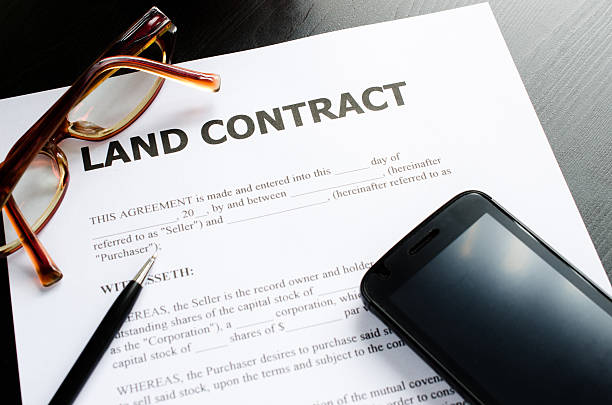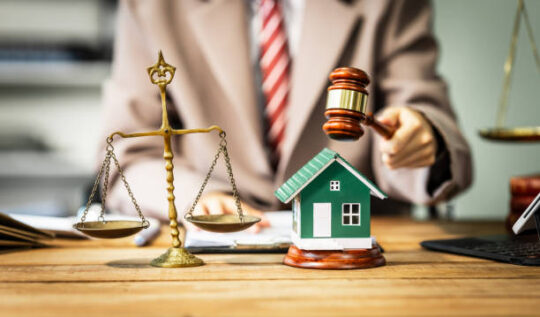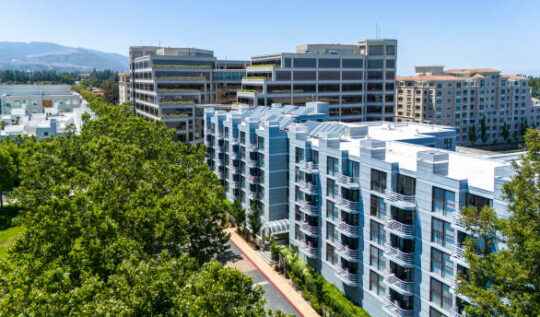How to Prepare for Zoning Hearing in Los Angeles
When you’re planning a development project in Los Angeles—or anywhere in California—navigating the zoning process can feel hard. A zoning hearing isn’t just a formality. It can determine whether your project moves forward, gets delayed, or requires costly revisions. For developers or homeowners, understanding the process from the very beginning is essential.
Table of Contents
ToggleThat’s where JDJ Consulting Group comes in. We help clients turn complex zoning requirements into a clear, actionable plan, saving time, money, and stress.
So, where do you start? Let’s break it down step by step.
📝 Zoning Hearing Preparation Flowchart
Source: JDJ Consulting Group, City of Los Angeles Planning Dept.
Understanding Why Zoning Hearings Matter
Before you dive into paperwork or strategy, it’s important to grasp why zoning hearings exist. Local governments are responsible for ensuring land is used in ways that benefit the community. Zoning hearings provide a forum for:
Evaluating proposed projects
The city reviews whether a project aligns with the local zoning code, general plan, and community vision.
Balancing interests
Hearings allow neighbors, stakeholders, and local officials to voice concerns or support.
Preventing conflicts
Proper zoning oversight minimizes negative impacts on traffic, safety, and the environment.
Understanding this context helps you approach the hearing with a proactive mindset. Think of it as a conversation rather than a confrontation. Your goal is to show that your project benefits both you and the community.

Steps to Preparing for Zoning Hearing in LA, California
Step 1: Define Your Project Clearly
One of the most common mistakes applicants make is entering a zoning hearing without a clear project vision. Before even filing paperwork, you should answer:
What exactly do I want to build or modify?
Does the current zoning allow it, or will I need a variance or rezoning?
What potential issues could arise from neighbors, planning staff, or city codes?
Writing down these points in a simple summary helps everyone on your team stay aligned. At JDJ Consulting Group, we often create a Project Overview Sheet for our clients that includes:
| Item | Example Details |
|---|---|
| Project Type | Residential duplex or commercial office space |
| Current Zoning | R2 (Residential) or C2 (Commercial) |
| Requested Change | Variance for additional floor space |
| Lot Size / Dimensions | 7,500 sq ft, corner lot |
| Potential Concerns | Parking, shadowing, traffic |
This table is a great starting point for organizing your approach.
2nd Step: Research Local Zoning Codes
Every city—and even different neighborhoods—can have unique zoning rules. Start by reviewing:
City Zoning Code: This is your primary reference for permitted uses, setbacks, height limits, and density.
General Plan: Understand the broader vision for land use in your area.
Overlay Districts or Special Zones: Some areas have rules related to fire or environmental concerns.
Tip: Many planning departments provide interactive zoning maps online. You can locate your property, check current zoning, and see what types of applications typically succeed.
Step 3: Conduct a Site Analysis
A zoning hearing isn’t just about paperwork; it’s about demonstrating that your project fits the physical context. Conduct a thorough site analysis:
Topography: Slopes, hills, and drainage patterns can affect design and code compliance.
Existing Structures: Note any buildings that must remain, easements, or encroachments.
Neighborhood Context: Assess neighboring building heights, uses, and density to anticipate potential objections.
JDJ Consulting Group often creates a Site Context Table to visualize these points:
| Factor | Observation / Notes |
|---|---|
| Lot Dimensions | 50 x 150 ft, rectangular shape |
| Existing Structures | Single-family home, detached garage |
| Surrounding Uses | Mix of single-family homes and small offices |
| Environmental Features | Mature trees, small creek on northeast corner |
This table becomes a foundation for both your application and your hearing presentation.
Step 4: Identify Potential Challenges Early
Proactive planning means anticipating challenges before the hearing. Common issues include:
Neighbor opposition due to aesthetics, parking, or noise.
Code compliance concerns, like setbacks, height limits, or floor area ratios.
Environmental issues, such as stormwater runoff, tree removal, or historic preservation requirements.
5th Step: Build a Team
Even small projects benefit from professional guidance. Consider involving:
Land Use Consultants: Experts can interpret codes, craft strategy, and prepare documentation.
Architects / Civil Engineers: Accurate drawings and site plans are critical.
Legal Advisors: Some hearings may require legal insight, especially for variances.
Step 6: Gather Initial Documentation
Start collecting essential documents even before filing your application:
Property Deeds / Ownership Records: Establish legal standing.
Existing Site Plans or Surveys: Required for most applications.
Preliminary Design Sketches: Helps the planning department and community visualize your project.
Supporting Evidence: Photos, maps, and data supporting your requests (parking studies traffic analyses).
📊 Typical Zoning Hearing Timeline
Source: JDJ Consulting Group, LA City Planning
Step 7: Plan Community Outreach Early
Community engagement can make or break a zoning hearing. At JDJ Consulting Group, we recommend:
Hosting a neighborhood meeting to introduce the project.
Sending informational flyers or letters to nearby property owners.
Engaging local stakeholders like homeowner associations or neighborhood councils.
Early outreach shows goodwill and often reduces opposition during the formal hearing.
8th Step: Set Realistic Timelines
Preparation takes time, and rushing can backfire. A typical zoning hearing preparation timeline might look like this:
| Task | Estimated Duration |
|---|---|
| Project Definition & Research | 1–2 weeks |
| Site Analysis & Surveys | 2–3 weeks |
| Team Assembly & Planning | 1 week |
| Documentation & Drawings | 3–4 weeks |
| Community Outreach | 2 weeks |
| Pre-Hearing Meetings | 1 week |
Planning realistically ensures that your team is not scrambling at the last minute. Thus, increasing the likelihood of approval.
Essential Documents for Zoning Hearings
Proper documentation is the backbone of a successful zoning hearing. Missing or inaccurate paperwork can lead to delays or even denials. Preparing these documents shows the planning board that your project is professional, well-planned.

Core Documents You’ll Need
Application Forms
These are the official requests submitted to the city for rezoning, variances, or special use permits.
Always verify you are using the latest version of the form from your city’s planning department.
Site Plans and Architectural Drawings
Detailed plans help the board visualize your project.
Include building footprints, setbacks, parking layouts, and landscaping.
Make sure drawings are clear and professionally prepared.
Environmental and Impact Assessments
Required if your project might affect traffic, noise levels, or local ecosystems.
Types of assessments include: traffic studies, shadow studies, storm water reports, and EIA reports.
Letters of Support or Petitions
Showing community backing can influence decisions positively.
Reach out to neighbors, local organizations, and stakeholders early.
Legal and Ownership Documents
Proof of property ownership or authorization to apply.
Title reports, easements, or covenants should also be included.
Document Checklist Table
| Document Type | Purpose / Importance | Notes |
|---|---|---|
| Application Form | Official request submission | Must be signed and dated |
| Site Plans / Drawings | Visual representation of project | Professionally prepared, clear labels |
| Environmental / Impact Assessments | Demonstrates compliance with city regulations | Required for larger or sensitive projects |
| Letters of Support | Shows community backing | Include names, addresses, and signatures |
| Legal / Ownership Docs | Confirms applicant’s legal right to submit proposal | Include deeds, easements, and surveys |
Tips for Document Preparation
Accuracy is critical: Double-check all numbers, dates, and legal descriptions.
Use professional help: Architects or civil engineers ensure technical documents meet city standards.
Organize clearly: Use binders, tabs, or digital folders so the board can review easily.
Supplement with visuals: Maps, photos, and renderings help communicate complex ideas.
Developing an Effective Strategy
Once your documents are ready, the next step is crafting a strategy for a smooth hearing. A clear plan increases your chances of approval and minimizes surprises.
Step 1: Early Engagement with Planning Authorities
Meet with city planners before the hearing.
Discuss your project concept and get feedback.
Early guidance helps avoid last-minute objections and compliance issues.
Step 2: Identify Potential Challenges
Anticipate possible objections so you can address them proactively:
Neighborhood Concerns: Parking, traffic, shadowing, or noise.
Code Compliance: Setbacks, height limits, floor area ratio, or environmental regulations.
Community Impact: Effects on schools, parks, or public services.
❓ Are You Ready for Your Zoning Hearing?
Select Yes or No:
3rd Step: Craft a Compelling Narrative
How you present your project matters. A strong narrative should:
Explain how your project fits with the neighborhood and city plans.
Highlight benefits: job creation, improved aesthetics, or community spaces.
Show consideration for concerns: extra parking, landscaping, or design modifications.
Step 4: Prepare for Questions and Opposition
Anticipate the board’s questions and objections.
Prepare concise, factual responses.
Avoid defensive language—stay professional and solution-focused.
Strategy Table
| Strategy Component | Key Actions | JDJ Consulting Tip |
|---|---|---|
| Early Planner Engagement | Meet city planners before submission | Schedule pre-application meetings |
| Potential Challenge Analysis | Identify code or community concerns | Use a checklist of common objections |
| Project Narrative | Prepare a clear, positive story | Emphasize community benefits |
| Hearing Preparation | Anticipate questions, create supporting materials | Practice presentations with your team |
| Team Coordination | Assign clear roles to team members | Include consultants, architects, and legal experts |
Pro Tips for Strategy Success
Documentation supports your strategy: Visuals and technical studies strengthen arguments.
Community outreach: Engaging neighbors often prevents opposition at the hearing.
Practice your presentation: Rehearse with your team to ensure everyone understands their role.
Community Outreach & Public Engagement
One of the most important aspects of preparing for a zoning hearing is community engagement. The more support you have from neighbors, local organizations, and stakeholders, the smoother your hearing is likely to be. Community outreach demonstrates goodwill, transparency, and consideration for local concerns.
Why Community Engagement Matters
Builds Trust: Engaging residents early shows that you value their input.
Reduces Opposition: When neighbors understand the benefits of your project, they are less likely to object.
Strengthens Your Case: Letters of support can positively influence the board’s decision.
Methods for Effective Outreach
Neighborhood Meetings
Invite nearby residents and stakeholders to learn about your project.
Share plans, visuals, and potential benefits.
Listen to feedback and take notes to address concerns.
Digital Outreach
Use email updates, community forums, or social media posts.
Include images, renderings, and clear descriptions.
Direct Mail or Flyers
Send information to surrounding property owners.
Include contact info for questions or comments.
Engage Key Stakeholders
Work with local homeowner associations, neighborhood councils, or advocacy groups.
Establish partnerships to gain endorsements.
Community Outreach Table
| Outreach Method | Purpose / Benefit | JDJ Consulting Tip |
|---|---|---|
| Neighborhood Meetings | Direct communication, show transparency | Prepare visuals and clear explanations |
| Digital Platforms | Reach wider audience | Share interactive maps, photos, and renderings |
| Direct Mail / Flyers | Inform residents formally | Include concise project summary and contact info |
| Stakeholder Engagement | Gain endorsements and build support | Target active local organizations |
Best Practices for Outreach
Start early, ideally before filing your application.
Document every interaction; this shows the board you made a genuine effort.
Address concerns proactively—be open to design adjustments that improve community reception.
Navigating the Hearing Day
Once your documents are ready and community outreach is underway, it’s time to prepare for the hearing itself. Confidence and preparation can make a significant difference in how your project is perceived.

Preparing Your Presentation
Organize logically: Start with project overview, then design, benefits, and impact mitigation.
Use visuals: Maps, renderings, and charts make complex concepts easier to understand.
Highlight community support: Present letters or petitions collected during outreach.
Coordinating Your Team
Assign clear roles: who presents which part, who answers technical questions, and who handles visuals.
Make sure everyone is familiar with the narrative and key points.
Rehearse together to ensure smooth delivery.
Handling Questions and Opposition
Listen carefully and respond professionally.
Address concerns factually rather than emotionally.
If you don’t know an answer, offer to follow up—never guess.
Keep responses concise and on-topic.
Post-Hearing Follow-Up
Understand the board’s decision timeline.
Prepare for additional conditions or requests for clarification.
Maintain communication with planning staff to ensure all post-hearing requirements are met.
Key Tips Table: Hearing Day Success
| Task / Area | Key Actions | JDJ Consulting Tip |
|---|---|---|
| Presentation | Clear, structured, and visual | Use slides, maps, and renderings |
| Team Coordination | Assign roles, rehearse | Include consultants, architects, and legal advisors |
| Question Handling | Respond factually and professionally | Anticipate common questions and objections |
| Post-Hearing Follow-Up | Track decisions and requirements | Maintain open communication with staff |
JDJ Consulting Group’s Expertise
Zoning hearings can feel overwhelming, especially for first-time developers or property owners. That’s where JDJ Consulting Group comes in. We specialize in Los Angeles land use, development consulting, and permit expediting. We guide clients step by step—from planning to post-hearing follow-up.
How JDJ Consulting Group Can Help
Project Evaluation & Feasibility
Analyze your property and proposed project.
Spot potential zoning challenges early.
Recommend the best approach, whether it’s a variance, rezoning, or conditional use permit.
Document Preparation
Prepare professional site plans, architectural drawings, and environmental reports.
Organize letters of support and legal documents.
Strategic Planning
Create a clear plan for your hearing, including messaging and stakeholder engagement.
Identify and address potential objections in advance.
Community Outreach & Engagement
Plan neighborhood meetings, online campaigns, and stakeholder communication.
Ensure your project has documented community support.
Hearing Representation & Support
Coordinate with your team and present your case confidently.
Answer questions and handle opposition professionally.
Guide you on post-hearing requirements or conditions.
Case Study Table: JDJ Consulting Group Success Stories
| Project Type | Challenge | JDJ Solution | Outcome |
|---|---|---|---|
| Residential Duplex | Parking concerns from neighbors | Conducted parking study and presented mitigation plan | Approved with conditions |
| Commercial Office Development | Rezoning required | Prepared rezoning application and led community outreach | Approved after hearing |
| Mixed-Use Project | Environmental concerns | Managed environmental studies and addressed objections | Approved with minor changes |
These examples show how JDJ Consulting Group turns zoning challenges into success. Clients save time, money, and stress.
Why Choose JDJ Consulting Group
Local Expertise: We know Los Angeles zoning and planning rules.
Proactive Approach: We anticipate problems before they happen.
Comprehensive Support: From planning to hearing representation.
Client-Focused: We tailor solutions to your project and goals.
With our guidance, clients approach zoning hearings with confidence and clarity.
Conclusion & Next Steps
Preparing for a zoning hearing doesn’t have to be stressful. With careful planning, proper documents, community engagement, and a solid strategy, your project can succeed.
Key Takeaways:
Know the zoning process and why it matters.
Gather and organize all necessary documents.
Plan a clear strategy, anticipate objections, and engage the community.
Practice your presentation and coordinate your team for the hearing.
Get professional support from experts like JDJ Consulting Group.
Call JDJ Consulting Group
Ready to move your development project forward? Contact JDJ Consulting Group today. We’ll help you:
Navigate complex zoning regulations.
Prepare complete, professional documents.
Engage the community effectively.
Represent your project confidently at the hearing.
💰 Zoning Hearing Cost Estimator
Source: JDJ Consulting Group Average Costs, Los Angeles
🚀 Ready to Ace Your Zoning Hearing?
Contact JDJ Consulting Group today for expert guidance on zoning, permits, and land use in Los Angeles.
📞 Get StartedFAQs: Prepare for Zoning Hearing in Los Angeles
What is land use in Los Angeles zoning?
Land use refers to how land in a specific zone can be utilized, such as residential, commercial, or industrial purposes. Each zone has regulations that dictate the types of activities permitted. Understanding these classifications is crucial for property development and compliance.
How do I find out if my property is zoned correctly?
You can use the Zoning Information and Map Access System (ZIMAS) to check your property’s zoning designation. This tool provides detailed information on zoning and land regulations specific to your address.
What is a zoning ordinance?
A zoning ordinance is a law that defines how property in specific geographic zones can be used. It regulates land use, building heights, setbacks, and other aspects to ensure orderly development. In Los Angeles, these ordinances are part of the Los Angeles Municipal Code (LAMC).
What is a zoning variance?
A zoning variance is an exception granted to a property owner. It allows them to use their property in a way that deviates from the current zoning regulations. For example, it might permit a taller building than normally allowed. In Los Angeles, variances are discretionary and require approval from the Zoning Administrator. planning.lacity.gov
What is a Conditional Use Permit (CUP)?
A Conditional Use Permit (CUP) allows a property owner to use their land in a way not typically permitted under the current zoning. For instance, opening a restaurant in a residential area might need a CUP. The process involves public hearings. It must prove that the use will not negatively impact the surrounding area.
Who decides on zoning and land use matters in Los Angeles?
In Los Angeles, land use decisions are made by various bodies, including:
City Planning Commission: Reviews and makes decisions on major land use matters.
Area Planning Commissions: Handle land use issues within specific geographic areas.
Zoning Administrator: Approves minor variances and conditional uses.
City Council: Final authority on zoning changes and land use policies.
These bodies ensure that development aligns with the city’s General Plan and zoning laws.
How do I apply for a zoning variance or CUP?
Applications for variances or CUPs must be submitted to the Department of City Planning. The process typically includes:
Submitting an application form with required documentation.
Paying applicable fees.
Participating in public hearings.
Addressing any concerns raised during the review process.
It’s advisable to consult with a land use professional to navigate this process effectively. JDJ Consulting Group
What is the role of the Department of City Planning?
The Department of City Planning is responsible for preparing and implementing the city’s General Plan. It oversees zoning regulations and processes applications for variances and CUPs. Also, it ensures that development aligns with the city’s goals and policies. American Legal Publishing
What is the General Plan in Los Angeles?
The General Plan is a long-term policy document. It outlines the city’s vision for growth and development. It includes elements like land use, housing, and open space, providing a framework for decision-making.
How does the City Council influence land use decisions?
The City Council has the final say on zoning changes and land use policies. While other bodies may review and recommend actions, the Council approves or denies proposals. Hence, ensuring they align with the city’s objectives and the General Plan.
What is the role of the Area Planning Commission?
Area Planning Commissions review and make decisions on land use matters within geographic areas. They consider applications for variances, CUPs, and other zoning-related issues. Thus, providing recommendations to the City Planning Commission and City Council.
How can JDJ Consulting Group assist with zoning and land use matters?
JDJ Consulting Group specializes in understanding the zoning and land use regulations in Los Angeles. We provide services including:
Assessing property zoning and land use designations.
Preparing and submitting applications for variances and CUPs.
Coordinating with city planning departments and commissions.
Representing clients in public hearings.
Our expertise ensures that your development projects proceeds in compliance with all regulations.
What is a zoning classification?
A zoning classification defines how land in a particular area can be used. Examples include residential (R), commercial (C), and industrial (I). Each classification sets rules for building height, density, setbacks, and permitted uses. Understanding your property’s zoning classification is essential for planning and development.
What are land use regulations?
Land use regulations are local rules that guide how properties can be used and developed. They include zoning ordinances, building codes, environmental restrictions, and Conditional Use Permits (CUPs). These regulations ensure that developments align with community plans and safety standards.
What is a land use decision?
A land use decision occurs when a city body approves, denies, or modifies a development proposal. Decisions may involve rezonings, variances, CUPs, or discretionary entitlements. Local government bodies, like the City Planning Commission, typically make these decisions.
Who are hearing officers?
Hearing officers are officials appointed to review and evaluate zoning and land use applications. They conduct public hearings, assess compliance with zoning regulations, and make rulings. They are particularly involved in variances, CUPs, and minor land use disputes.
What is a development permit?
A development permit is official approval from the City of Los Angeles. It allows construction or land modification according to zoning laws. It ensures the project meets land use regulations, building codes, and safety standards. JDJ Consulting Group can assist in preparing and submitting these permits efficiently.
What is a discretionary entitlement?
A discretionary entitlement is approval for projects that do not follow zoning regulations. Examples include variances, CUPs, or rezoning requests. These approvals are discretionary because city bodies evaluate projects on a case-by-case basis.





